Research Symposium
22nd annual Undergraduate Research Symposium
Kiersten Schweizer Poster Session 3: 11:00-11:45/Poster #49

BIO
I’m a sophomore at Florida State University, but my hometown is Normal, Illinois. I always felt so drawn to the ocean, and in order to pursue a career in marine sciences, I decided that it might be important for me to move somewhere that actually had ocean access. It deeply saddens me that our oceans are taken advantage of, and in my professional career, I’d like to do something to help suffering marine life. Currently, I’m thinking of doing marine rehabilitation work or possibly another area of study in which I can help mitigate the effects of human disturbance in our oceans.
Meiofauna standing stocks across the West Florida Shelf
Authors: Kiersten Schweizer, Dr. Jeroen IngelsStudent Major: Biology with a focus in marine biology
Mentor: Dr. Jeroen Ingels
Mentor's Department: Ecology Mentor's College: Biological Sciences Co-Presenters:
Abstract
Meiofauna are microscopic organisms ranging 63-500 µm in size that live in oceanic sediment. There are a myriad of taxa that fall within this group, but for this study, we focused on the dominant nematodes and copepods. The density and type of meiofauna were examined and compared at 12 stations along two bathymetric transects (25-300 m) across the West Florida Shelf off St Petersburg (influence of urban pollution) and 50km North of St Petersburg (reference transect). Meiofauna community composition, densities, and biomass are excellent ecological indicators, providing insights into the sedimentary environment they inhabit, while nematode:copepod ratios can be used to assess disturbance or pollution levels. Samples were washed and processed using density separation to extract the organisms. Nematodes and copepods were counted in each sample, and specimens were measured to calculate biomass. Data will be compared across bathymetry and distance from shore, and assessed against environmental parameters available from colleague investigators. The main objective of the study is to investigate whether clear meiofauna patterns can be established and whether the vicinity of urban St Petersburg affects meiofauna communities and hence environmental health of the sedimentary environment.
Keywords: meiofauna, ecological health, pollution, copepods, nematodes
22nd annual Undergraduate Research Symposium
Zeke Greenwood Poster Session 5: 1:30-2:15/Poster #68
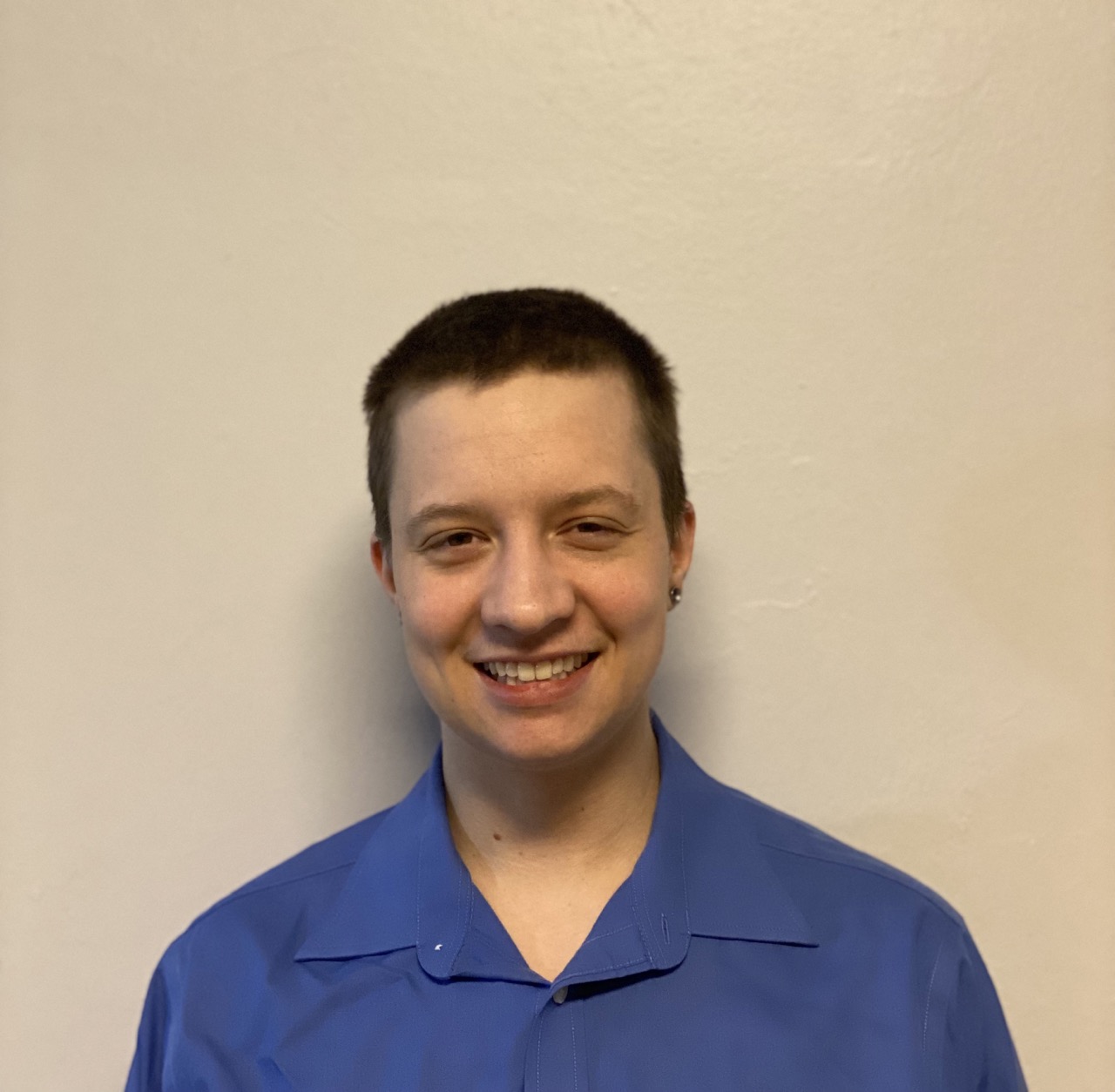
BIO
I am a Tallahassee native who has been interested in queer and local history for several years. I hope to graduate in Spring 2023 and maybe attend graduate school in London. I have two cats named Meeko and Davey Jones.
Naiad Press: An LGBT Oral History of Tallahassee
Authors: Zeke Greenwood, Michael FranklinStudent Major: History and International Affairs
Mentor: Michael Franklin
Mentor's Department: Honors Mentor's College: Honors College Co-Presenters:
Abstract
This project involves interviewing many people that were involved in Naiad Press, a lesbian publishing company located in Tallahassee. The interviewees were found through personal contacts as well as through public outreach including hanging posters with contact information around town. Participants were invited to be interviewed about their experience with Naiad Press and its founders Donna McBride and Barbara Grier. Employees on the publishing floor, writers, maintenance people, and an owner of a bookstore at which many employees spent their free times have all been interviewed. The end goal of this project is to create a museum exhibit with audio clips and visual aids to tell the story of Naiad Press and the LGBTQ community of Tallahassee.
Although many people had positive experiences with Naiad, Barbara’s fiery personality caused many conflicts and interviews have reflected negative experiences as well. However, regardless of personal feelings, Naiad Press is an integral and overlooked part of Tallahassee’s history. Locally, it was a refuge for many LGBTQ people and a hub for socializing and community building. Nationally and internationally, it became the largest publishing company of its kind and won acclaim for its accomplishments and helped to carve out a larger space for lesbian publishing. Its founders were pillars of their community in many ways. It is hard to overstate the importance of Naiad Press, and the experiences of the people involved in it, but this project hopes to illuminate and share these vital histories.
Keywords: LGBT, Lesbian, Oral History, History, Naiad Press
22nd annual Undergraduate Research Symposium
Julie Adams Poster Session 4: 12:30-1:15/Poster #15
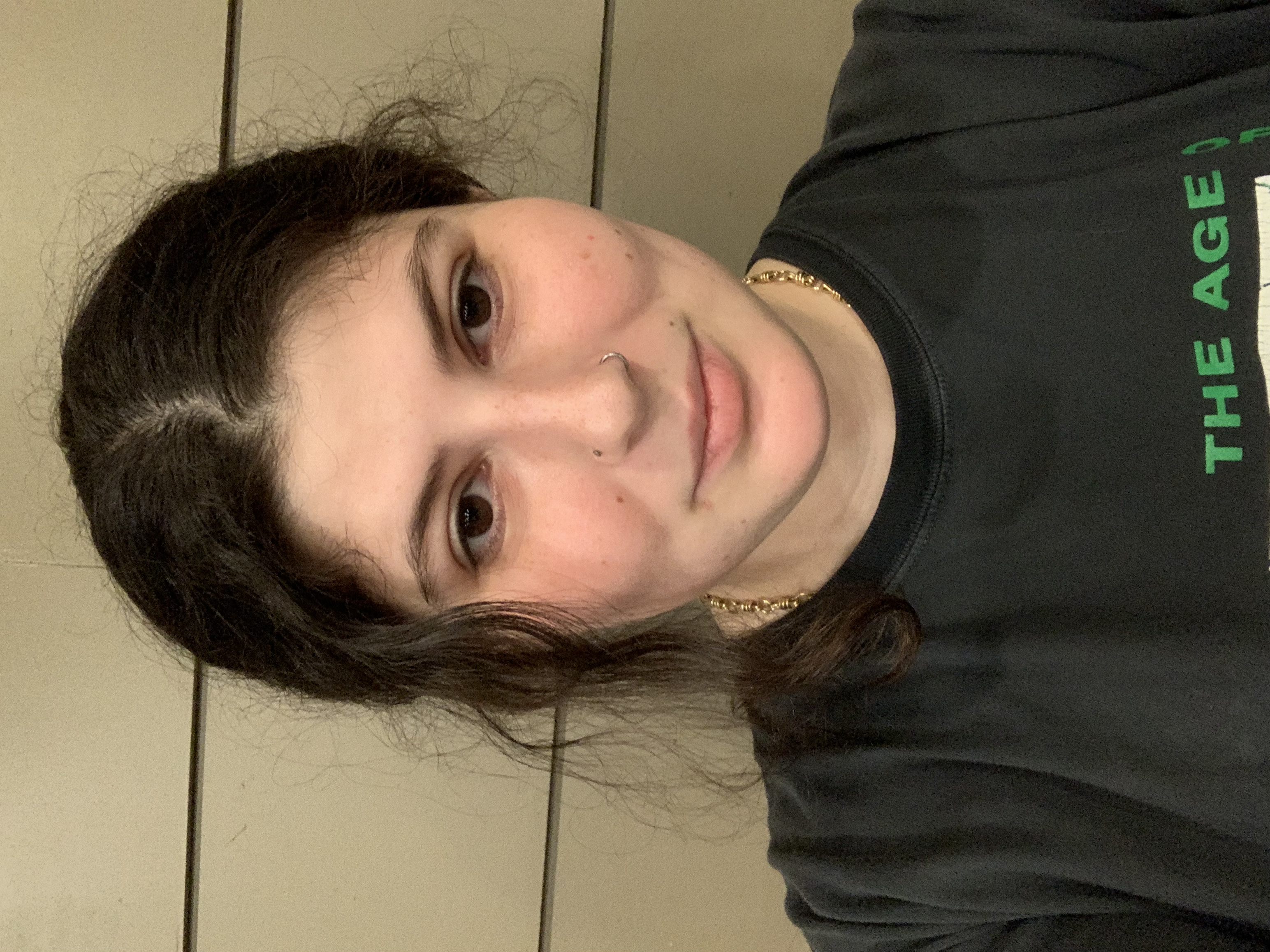
BIO
Julie Adams is a second-year student from Melbourne, Florida, in the Theater department, specializing in lighting and theater tech. They wants to work on theater productions, designing and choreographing innovative lighting for a wide range of shows. In their spare time, they like reading poetry and playing with their Dalmatian, Milo.
Sky of the Beholder: Stylistic Differences in Photography of a Solar Eclipse
Authors: Julie Adams, Ronald DoelStudent Major: Theater
Mentor: Ronald Doel
Mentor's Department: History Mentor's College: College of History Co-Presenters:
Abstract
Two scientists--Henrietta Swope and Clyde Fisher--were both present on an expedition to Kazakhstan to view and gather data about a solar eclipse in June 1936. They carried personal cameras, and the photographs each of them took offer insights into their respective interpretations of the eclipse expedition, as well as the people living in the small Siberian town near their eclipse encampment. They were physically in the same place, but what each chose to record was distinct. These different perspectives are visible in the composition, framing, and subjects of their photographs. I place these differences in conversation with other documents from the expedition, including books, news articles, and personal manuscripts, in order to compare and contrast Swope and Fisher’s approaches to image construction and photography. I find significant differences between their expedition photographs, as well as their written descriptions of events they experienced. These differences are particularly pronounced with respect to the objects of their focus--be they people, actions, or events. I find that Swope’s photography centered on candid human interactions witnessed during the expedition, while Fisher tended to photograph scientific processes and the challenges of data collection
Keywords: Photographs, astronomy, Swope, Fisher
22nd annual Undergraduate Research Symposium
Emma Quaid Poster Session 1: 9:00 - 9:45/Poster #34

BIO
My name is Emma Quaid, and I am a second-year student at FSU. I have majored in sociology, and after I finish my bachelor’s degree, I plan to continue with graduate school and get a Ph.D. and aim to have a career in academia. This project is the first research project I have participated in, but I hope to continue to do more, and I would be interested in doing more research projects in the field of sociology.
Analyzing Consent Cross-Culturally: Building a Framework to Accommodate Social Understanding
Authors: Emma Quaid, Marshall BiersonStudent Major: Sociology
Mentor: Marshall Bierson
Mentor's Department: Philosophy Mentor's College: Arts and Sciences Co-Presenters: Katherine Velardo
Abstract
Consent has been a topic of recent philosophical debate, and understanding how consent is given and what that agreement looks like is important to philosophy debates and everyday life application. The concept of consent presents itself in the agreements we make, like consent to medical procedures, consent to loan agreements, or consent to sexual acts. Knowing the markers of valid consent is crucial to having fair and morally permissible agreements. While consent may be seen as a basic yes or no, factors such as cultural expectations, implied and explicit communication, gender roles, social scripts and expectations can make consent harder to categorize and understand. The objective of our research is to look at how consent presents itself across different cultures considering the three prominent fields of sexual, medical, and contractual consent. We want to form a base framework or understanding of consent so individuals can navigate what consensual agreement looks like cross-culturally. This includes what valid consent looks like and what’s actually being agreed to. By collecting journal articles through FSU databases, we performed literature reviews to build concept maps and knowledge of the current consent terrain. After the summary and analysis of the articles, a preliminary visual was created off the most compelling consent framework with cross-cultural additions to account for our analysis. We found that consent relies on the interaction between the content of one’s agreement and the implied exchange that comes with that agreement, primarily through situational and cultural knowledge and expectations.
Keywords: Consent, Knowledge, Expectations
22nd annual Undergraduate Research Symposium
Kailey DiPaolo Poster Session 3: 11:00- 11:45/Poster #54
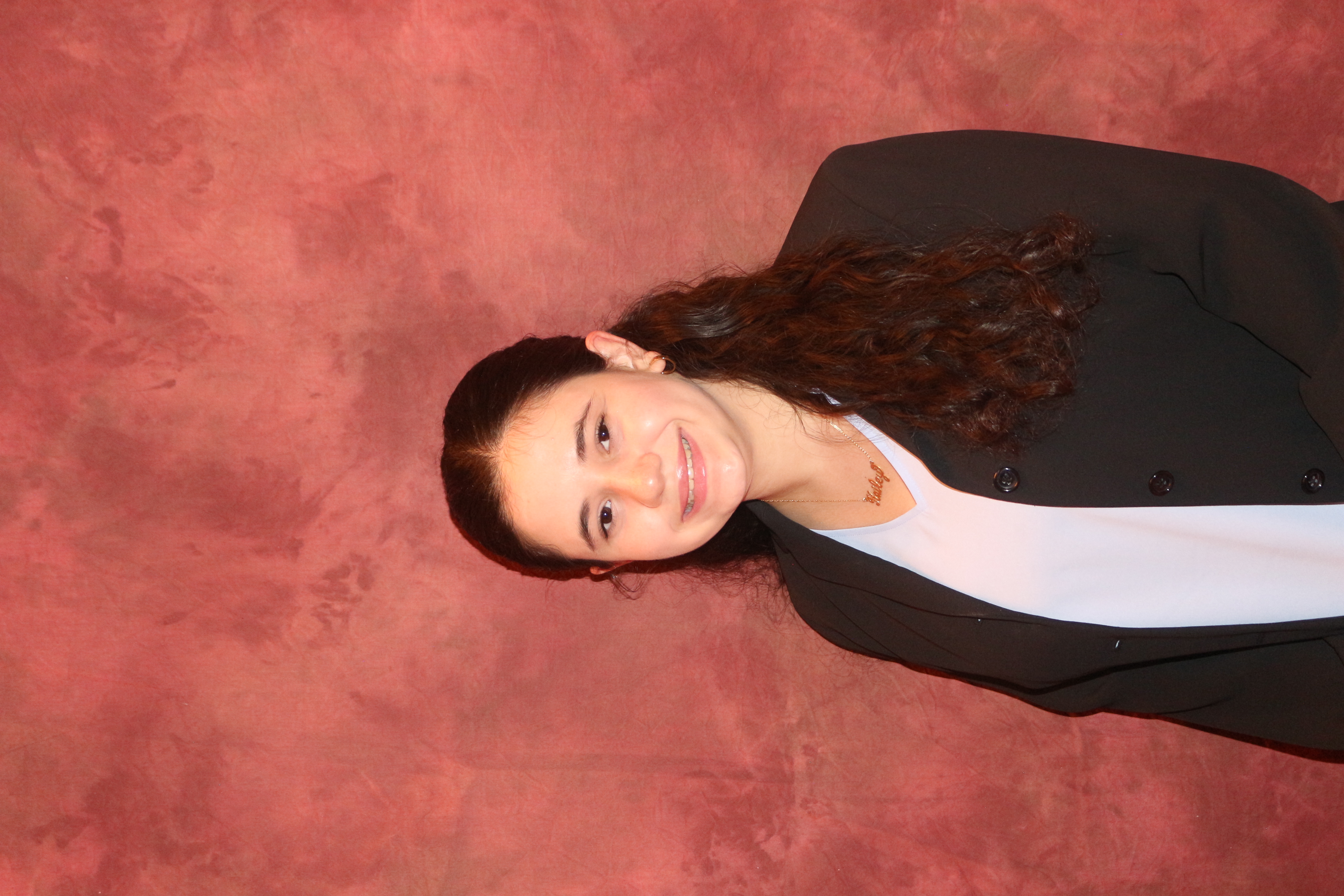
BIO
Hello, my name is Kailey DiPaolo I am from Fort Lauderdale, Florida and I am currently pursuing a degree in IMS Clinical Professions in the hopes to become a physician.
Navigating College During the Pandemic
Authors: Kailey DiPaolo, Riccardo PuritaStudent Major: IMS Clinical Professions
Mentor: Riccardo Purita
Mentor's Department: Educational Leadership and Policy Studies Mentor's College: College of Education Co-Presenters: Michelle Polanco
Abstract
As colleges and universities pursue a transition back to fully in-person classes, the prevailing narrative of returning to “normalcy” dominates the conversation. Unfortunately, asserting a “back to normal” mindset disregards the disparate experiences faced by students with disabilities in comparison to their peers. This project presents a review of six previous studies that analyzed college experiences for students with disabilities, particularly during the COVID-19 pandemic. Our findings show that this population has experienced high rates of depression and a lower sense of belonging during the pandemic. As an already marginalized group, COVID-19 hindered their college experiences further including making it more challenging for them to receive accommodations. We show that additional qualitative studies focused on student narratives are needed.
Keywords: COVID-19, disabilities, college
22nd annual Undergraduate Research Symposium
Karen Iglesias Poster Session 3: 11:00- 11:45/Poster #63
BIO
My name is Karen Iglesias and I am an undergraduate student at Florida State University, majoring in Psychology with minors in History and Chemistry on a pre-med track. I was born in Havana, Cuba but moved to Miami, Florida at the age of seven. I am interested in Global Health, more specifically mental health and the stigma around mental illnesses. During my free time, I enjoy watching crime documentaries and listening to music. In the future, I plan on completing medical school and becoming a pediatrician.
Role of Implicit Prosody in Syntactic Disambiguation During Silent Reading in Spanish
Authors: Karen Iglesias, Ms. Nerea Delgado FernandezStudent Major: Psychology
Mentor: Ms. Nerea Delgado Fernandez
Mentor's Department: Department of Modern Languages and Linguistics Mentor's College: College of Arts and Sciences Co-Presenters:
Abstract
The current study aims to analyze the role of implicit prosody in disambiguating adjective attachment in Spanish speakers of differing language fluency. Implicit prosody refers to the phenomenon that sound representations are activated during silent reading. Other studies have shown that readers can use implicit intonational information to dissolve ambiguous sentences during silent reading. With this study in particular one language was studied, Spanish, in an attempt to find if there are any statistically significant differences between implicit prosody in silent Spanish reading at the intermediate level and silent Spanish reading at the advanced level. Moreover, the study also tests the role of implicit prosody in native Spanish speakers. To create the materials, an alternate group of participants filled out a form with some demographic questions followed by ambiguous sentences. From the resulting norming data a system was established with 3 possible codes, which were then used to quantify the data given by our participants. Due to the ongoing nature of this study, no concrete conclusions can be drawn yet, but future analyses will include more meaningful data and provide a better insight into the difference in implicit prosody across native Spanish speakers and the two different levels of Spanish language fluency (intermediate and advanced).
Keywords: Language, Spanish, Implicit Prosody
22nd annual Undergraduate Research Symposium
Ali Bell Poster Session 7: 3:30 - 4:15/Poster #58
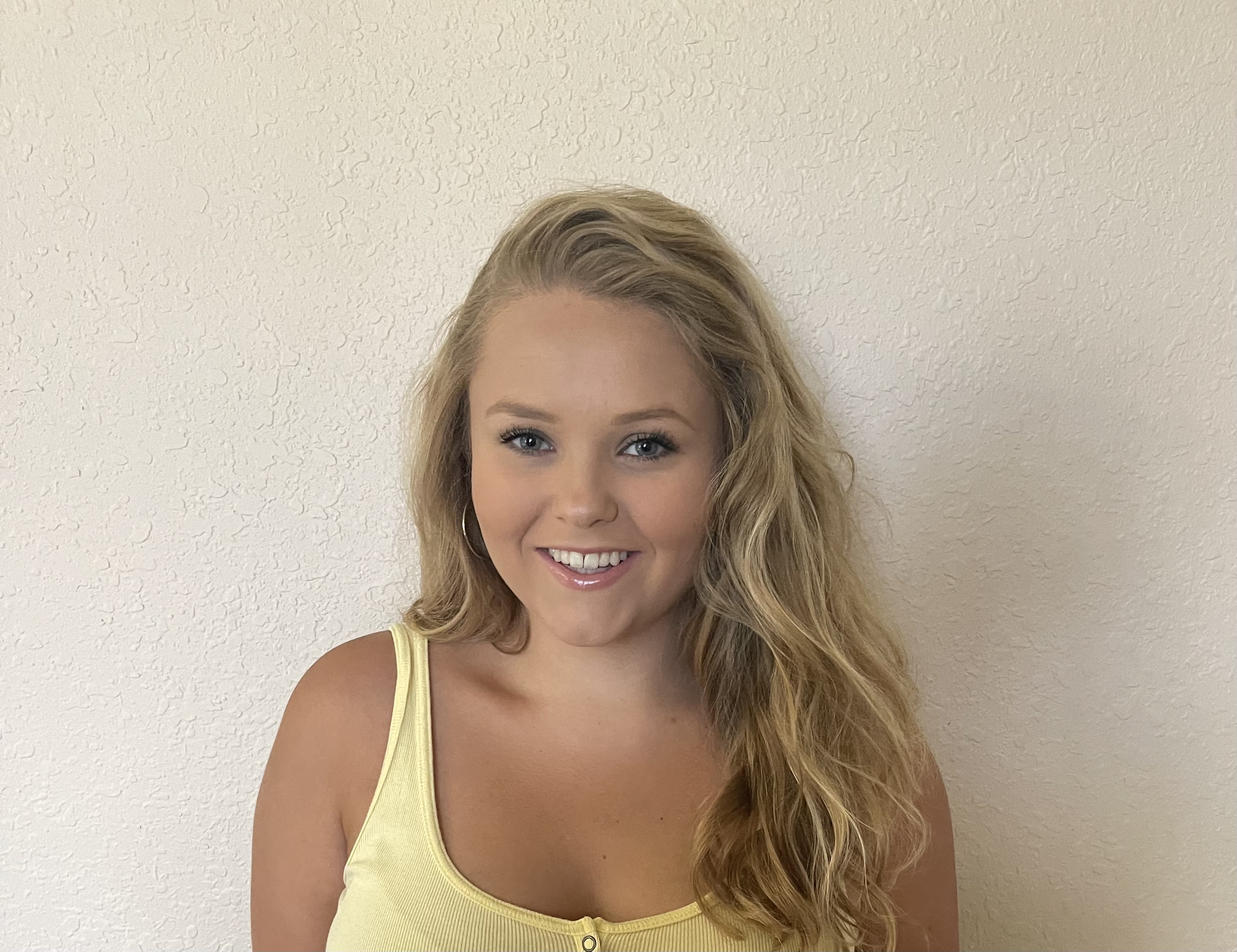
BIO
My name is Ali Bell and I am from Fort Myers, Florida. I am an undergraduate student at Florida State University studying Public Health. I intend on pursuing dentistry and owning my own practice one day. I enjoy researching any bodies of water and helping my community.
Lake Munson Project
Authors: Ali Bell, J. Terry RyanStudent Major: Public Health
Mentor: J. Terry Ryan
Mentor's Department: Biological Sciences/Health Mentor's College: Arts and Sciences Co-Presenters: John Stainbrook
Abstract
Lake Munson has been a polluted body of water for more than 100 years, the
people living in the area have noted complications and disease arising from
their proximity to the lake since this time. Using data tabulated from Florida
Health and Charts, along with supporting socioeconomic databases, research
was conducted to ascertain the validity of these claims. Census Tracts 27.01,
18.01, 11.01, 10.01, 10.02, 22.01, 14.02, and 20.03 had the lowest life
expectancy figures in Leon County from 2015-2019 ranging from 67.10 to
72.90 years and averaging 70.26 years (Leon CountyAverage:79.6 years).
Utilizing a T test for significance, the 8 life expectancies were lower than the
Leon County Average to a degree of high statistical significance, (p=0, n>50).
Five of these eight directly encompass Lake Munson and the Munson Slough:
27.01, 18.01, 11.01, 10.01, and 10.02. Census tracts 22.01, 14.02, and 20.03
do not directly surround Munson and the Munson Slough, however census
tracts 20.03 and 14.02 have extremely high poverty rates of 64.20% and
64.80% respectively. The poverty rate for the remaining 6 census tracts are not
as high, ranging from 19.30% to 41.70% and averaging 32.50% (Leon County
Average poverty rate: 22%). These results seem to support our initial
hypothesis that the pollution of Lake Munson is affecting the life expectancy
of those living in the aforementioned-census tracts
Keywords: Mortality Rates, Surrounding counties
22nd annual Undergraduate Research Symposium
Ashley Derival Poster Session 6: 2:30-3:15/Poster #2
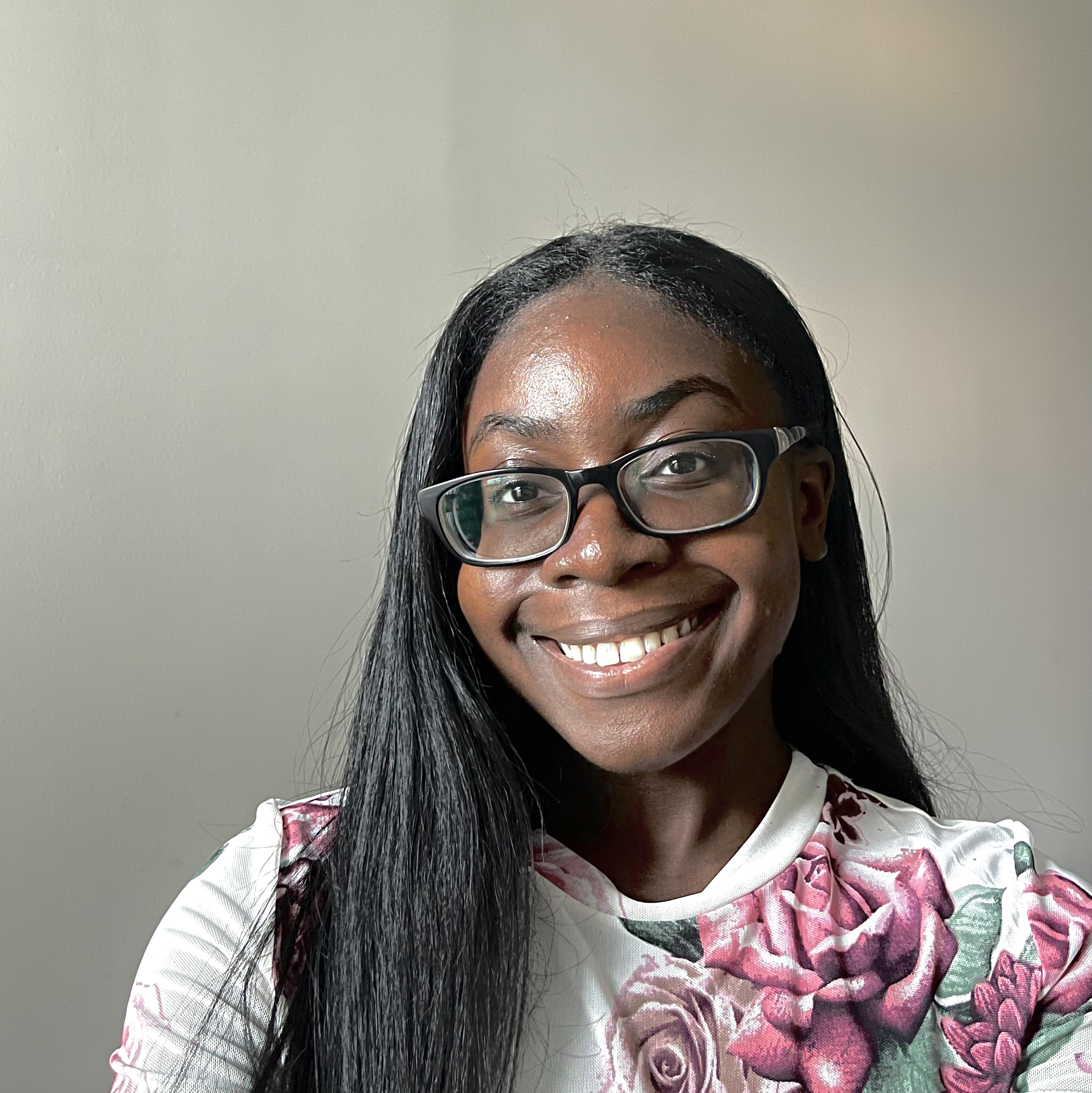
BIO
My name is Ashley Derival and I am a 2nd-year undergrad. I was born in South Florida but was raised in Virginia for most of my life. I'm an avid and eager learner of a lot of things, but there is a special place in my heart for science, and would absolutely love to continue doing research.
Effect of Food Fluctuation on the Relationship Between Dry Body Weight and Length for Heterandria formosa
Authors: Ashley Derival, Matthew SchummStudent Major: Biological Sciences
Mentor: Matthew Schumm
Mentor's Department: Biological Sciences Mentor's College: Arts and Sciences Co-Presenters:
Abstract
Food fluctuation is a condition where the availability of food is irregular over time. Variable food can lead to a negative Jensen’s effect where low rates of food can affect the species negatively, but high rates of food have no significant positive effect. This experiment analyzes the effect of food fluctuation on the relationship between dry body weight and length for Heterandria formosa, a species of live-bearing fish. We gathered fish from variable-fed tanks (fluctuating system) and constant-fed tanks and measured each fish’s individual length with PictureMeasure. We then lyophilized the fish after freezing to collect the dry body weight. Findings show that energy reserves within the bodyweight do not deplete when these fish experience fluctuations in food.
Keywords: Fish, Fluctuation, Evolution, Length, Weight
22nd annual Undergraduate Research Symposium
Lance Hendrickson Poster Session 1: 9:00-9:45/Poster #43
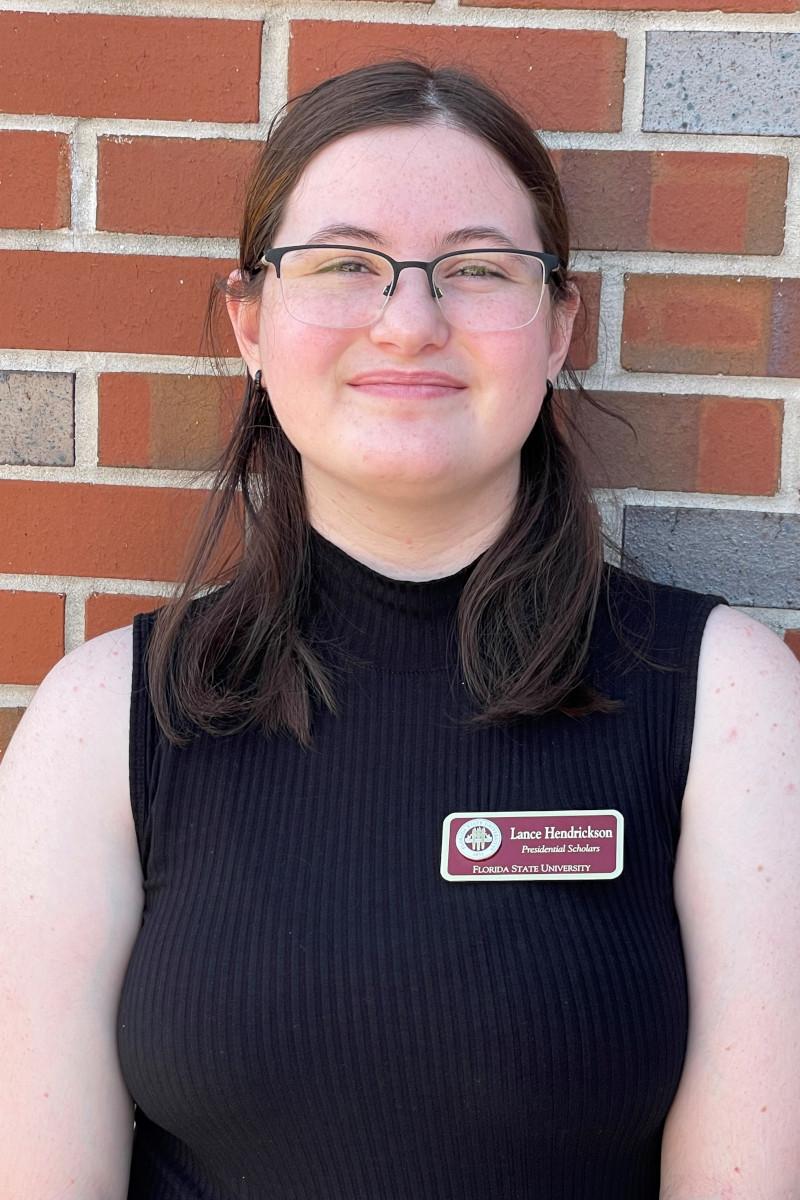
BIO
I am a first-year environmental science student from West Chester, Pennsylvania. I have always loved learning about the world which we inhabit, so I hope to continue researching ecology in the future.
Seed Variations in Heterotheca Subaxillaris
Authors: Lance Hendrickson, Thomas MillerStudent Major: Environmental Science
Mentor: Thomas Miller
Mentor's Department: Biological Sciences Mentor's College: Arts and Science Co-Presenters:
Abstract
On St. George Island, FL, Heterotheca subaxillaris (commonly known as camphorweed) is a plant present in abundance on all parts of the sand dunes. Given that the foredune region is much more disturbed than the backdune region, we ask the following question: are there differences among H. subaxillaris individuals on the foredune with regards to seed production? We believe that plants on the foredune will produce more disk type seeds, as they are more efficient for dispersal.
Keywords: ecology, botany, environment
22nd annual Undergraduate Research Symposium
Giola Cancilla Poster Session 4: 12:30 - 1:15/Poster #44

BIO
My name is Giola Cancilla, and I am a second-year Environmental Science & Policy student from Fort Lauderdale, Florida. As a lifelong Floridian, I have a great appreciation for the diverse natural environment, wildlife, and landscapes this state has to offer. In my future career, I hope to work toward introducing additional sustainable energy sources to Florida and be involved in supporting conservation efforts that protect our native ecosystems. I look forward to meaningfully engaging with policymakers to make the voices of Florida’s people and natural environment heard. My research interests include climate change mitigation, urban planning and ecology, and political science. Outside of academics, I enjoy exploring Tallahassee’s local nature spots; I frequently go to San Luis Mission Park to get a breath of fresh air!
Evaluating Knowledge Products for Sustainability, Resilience, and Climate Change Response Efforts
Authors: Giola Cancilla, Dr. Kassie ErnstStudent Major: Environmental Science & Policy
Mentor: Dr. Kassie Ernst
Mentor's Department: FSU Engineering LLC Mentor's College: FAMU-FSU College of Engineering Co-Presenters: Nia Ogletree, Sophie Pineau, & Isabella McClain
Abstract
This research evaluates decision-support tools that are built for decision-making towards sustainability and resilience in the context of climate change. We seek to understand how these tools are applied in different contexts by analyzing six decision-support tools built for ecosystem-based management processes. We collected data, reviewed research studies, and analyzed their methods using the KnoPE (Knowledge Product Evaluation) Framework, a four-dimensional analytical system that organizes elements, assesses scales, assesses alignment to a theory of change, and analyzes the use of a decision-support tool. Our results help identify opportunities and challenges to creating tools that are easily accessed and understood to make decision-making in the context of climate change easier to achieve. Developers and investors of the decision-making tools are interested in advancing them to expand accessibility and comprehension for the use of policy and decision-makers who have the influence to initiate change. Decision-makers need support planning for a variety of climate-change impacts and these tools will provide context and information so they can better prepare for the impending future.
Keywords: environment, policy, decision support, climate
22nd annual Undergraduate Research Symposium
Luke McDaniel Poster Session 4: 12:30 - 1:15/Poster #38
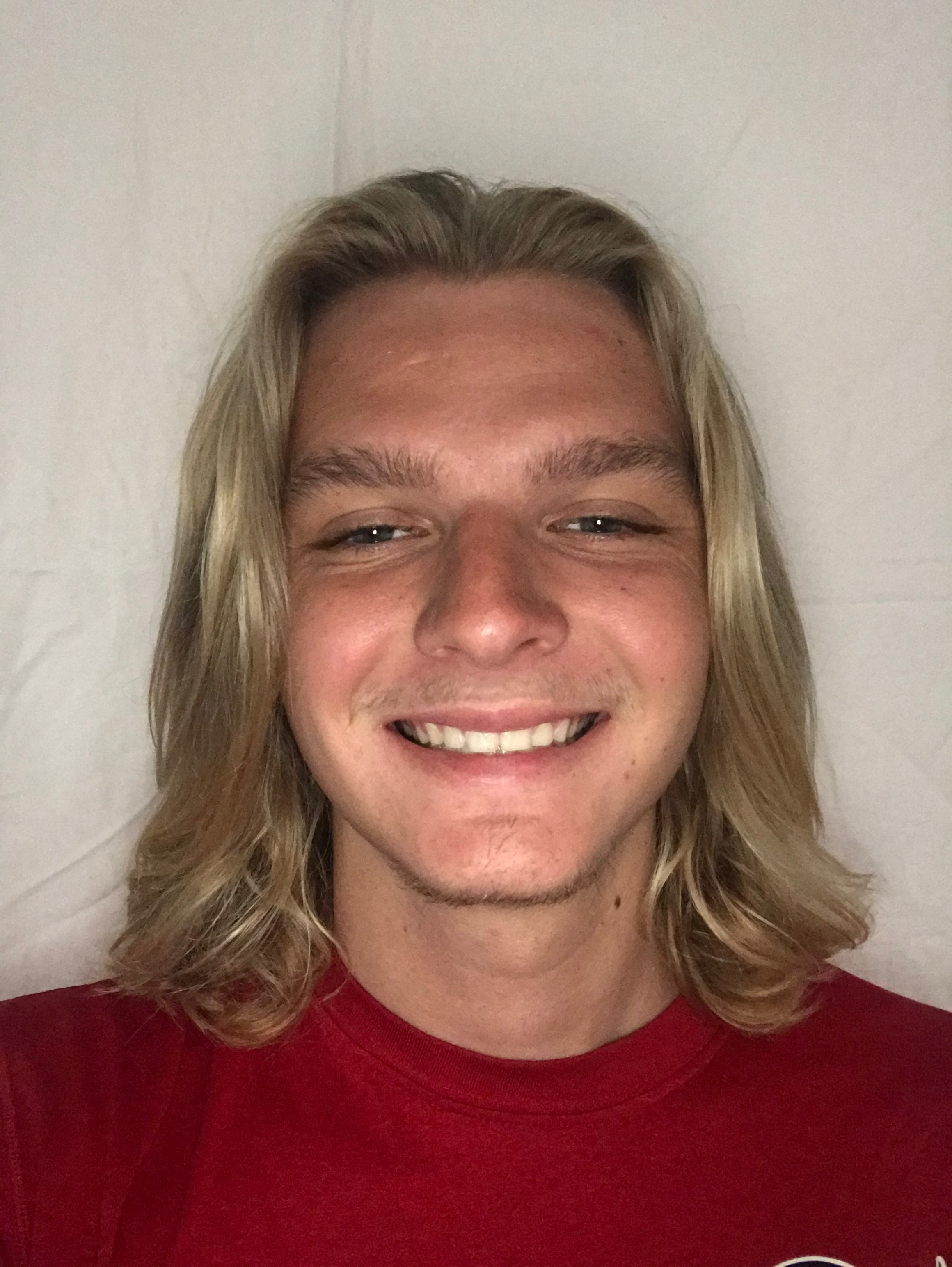
BIO
My name is Luke McDaniel and I am from Fort Myers, Florida. I am an undergraduate student at Florida State University studying Environmental Science and Policy. I intend on pursuing a career in the guiding business as a saltwater charter as well as using my degree for research. I enjoy fishing and researching better ways to manage our waterways.
Photodegradation of Rhodamine Dye in Water Under Solar Radiation
Authors: Luke McDaniel, Dr. Ming YeStudent Major: Environmental Science and Policy
Mentor: Dr. Ming Ye
Mentor's Department: Department of Earth, Ocean, and Atmospheric Science Mentor's College: Department of Scientific Computing Co-Presenters: Matt Conlan
Abstract
In June of 2021 Lake Jackson suddenly found its water draining through Porter Sink and into the aquifer that feeds all of the rivers and lakes in the area. When that happened however, there was a prevailing question: Where did all of the water go?
To determine this, a team of researchers from Florida Geological Survey introduced into the sinkhole Florescence dye, a soluble eco-friendly water marker. After processing through the water column and testing at several sites, the team was unable to find any trace of the dye within water samples. As a result, the team now questioned if there were any other outliers affecting the dye such as photodegradation when exposed to sunlight.
Rhodamine Dye is one of the common substances utilized for water tracing. Its emission spectrum makes it incredibly viable for use with a fluorometer as it can be evaluated into the parts per billion. However, there are studies that indicated that Rhodamine and Fluorescein dye will degrade at a higher rate when subject to lower concentrations (Cai 2020), as what is seen in this study.
Further, exposure to solar radiation will cause Rhodamine dye to experience photochemical decay (Water Tracing), which will further reduce the fluorescence of the dye within water.
Keywords: Photodegradation, Solar Radiation, Rhodamine Dye
22nd annual Undergraduate Research Symposium
Camilla May Poster Session 1: 9:00-9:45/Poster #7
BIO
I am a Senior Biology Major at Florida State University. I am in a research lab in the Department of Biological Sciences, Program in Neuroscience, Institute of Molecular Biophysics, at FSU. In this lab, we are using mice to study olfaction and neuron excitability. I am working on my Honors in The Major thesis, where I am looking at the anti-inflammatory and neuroprotective properties of CBD in the olfactory system of mice.
After my undergraduate studies, I hope to get into a PhD program studying neuroscience. For me, there is nothing more rewarding than the pursuit of scientific knowledge and discovery. Being involved in undergraduate research at FSU has solidified my love for science, and made it clear for me that I want to pursue a career in scientific research.
The Therapeutic Potential of Cannabidiol
Authors: Camilla May, Debra FadoolStudent Major: Biology
Mentor: Debra Fadool
Mentor's Department: Biology Mentor's College: Arts and Sciences Co-Presenters:
Abstract
As the medicalization of marijuana occurs across the United States, the main non-psychoactive component of the marijuana, cannabidiol (CBD), has gained recognition for its therapeutic potential. CBD has been marketed to treat an array of illnesses, notably anxiety. Given the accessibility of CBD, and that anxiety is the most common type of mental illness in the United States, our objective was to access the therapeutic potential of acute administration of CBD. Our methods employed two-month-old Kv1.3-/- (KO) anxiety prone mice, or wildtype (WT) mice. The mice were behaviorally assessed using five tasks. Mice were dosed daily, 30 minutes prior to performing a behavioral test. Mice of both sexes were separated into cohorts in which they were designated to receive an intraperitoneal injection of drug (CBD = 10 or 20 mg/kg) or vehicle solution at equivalent volume. The tests showed CBD decreased obsessive compulsive behavior in male but not female mice, and the required dose to produce this behavior was higher for the KO mice. In one of the tests CBD lessened anxiety for both sexes, yet females required a lower CBD dose than males in WT mice; in KO mice, CBD was angiogenic rather than anxiolytic for both sexes. In another test, female KO mice became angiogenic to CBD. In conclusion, there is a sex-dependent, genotype-dependent, and dose-dependent effect of CBD on anxiety behaviors. My future studies will explore the anti-inflammatory and neuroprotective therapeutic properties of CBD in the olfactory system of mice.
Keywords: Neuroscience, Pharmacology, Behavior, CBD, Cannabinoids
22nd annual Undergraduate Research Symposium
Jorge Miranda Poster Session 6: 2:30-3:15/Poster #64
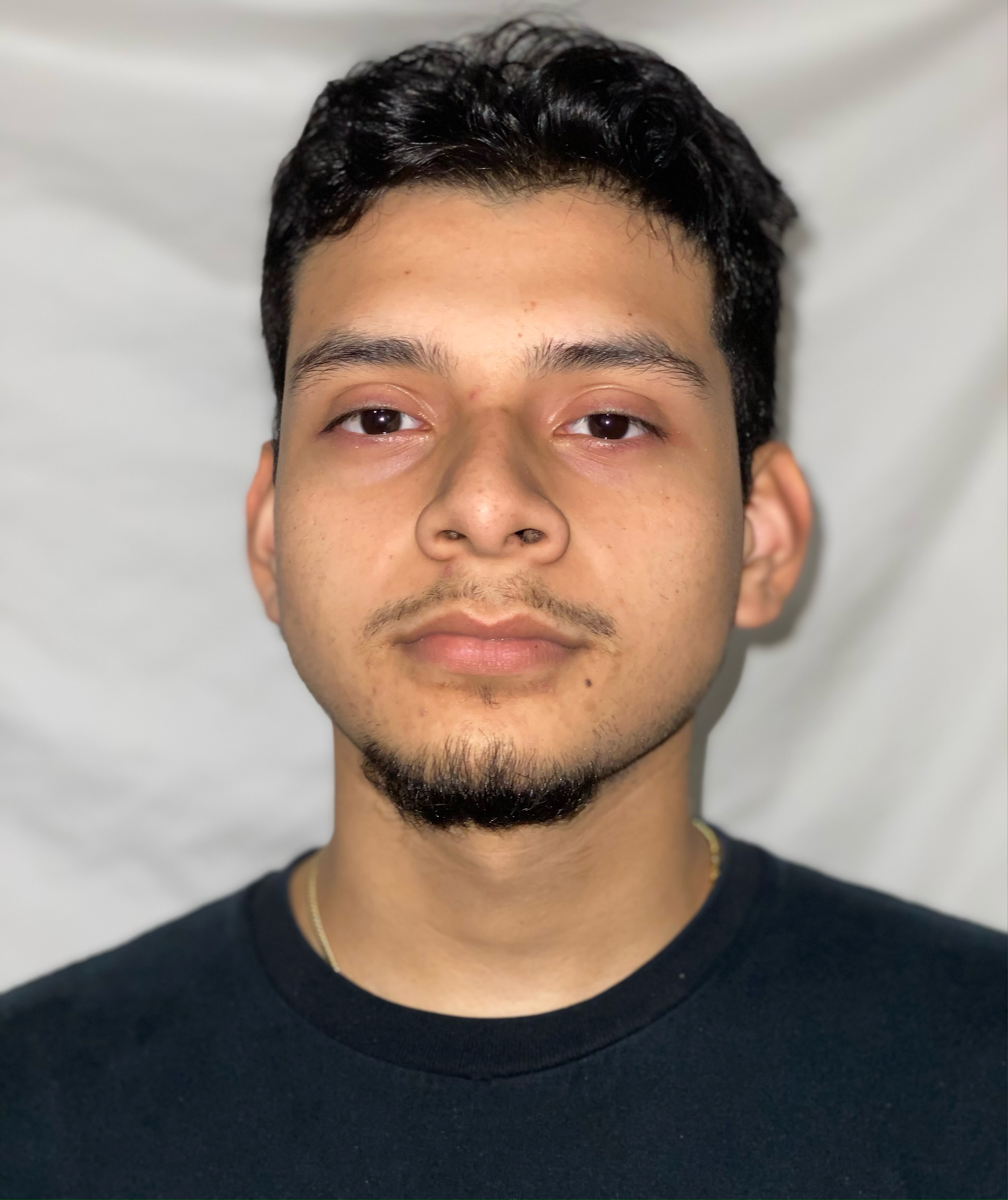
BIO
I am an undergraduate student at Florida State University majoring in Biological Science. I have a passion for creating innovations that could contribute to the betterment of society. Through concepts in biology and mechanical engineering, I hope to develop an innovation that will improve the quality and functionality of daily activities.
Developing Plant-Based Edible Films for Food Packaging
Authors: Jorge Miranda, Leqi CuiStudent Major: Biological Science
Mentor: Leqi Cui
Mentor's Department: Food Science Mentor's College: Health and Human Sciences Co-Presenters:
Abstract
Background: Plastic packaging has been damaging to the environment and the planet’s ecosystems for a
long time. Creating a sustainable and biodegradable material with comparable properties to plastic would
be groundbreaking in the materials industry and greatly reduce harm by plastic production to the
environment. Aim: To Develop a sustainable material with comparable properties to current for food
packaging. Methods: A film was prepared using pea protein isolate that was glycated with pullulan. The
effects of the Maillard Reaction on film properties were measured as well for the properties themselves to
determine the practicality of film compared to current packaging. Results: As the Maillard reaction
proceeded, the film experienced several improvements in properties such as color, film texture, tensile
strength, elongation, absorbance, water content and water vapor permeability. Conclusion: The film that
underwent the Millard reaction demonstrated improved properties compared to the control film and may
serve as a possible opportunity for producing an environmentally friendly packaging material.
Keywords: PPI, Pea Protein, Maillard Reaction, materials science
22nd annual Undergraduate Research Symposium
Lily Johnson Poster Session 5: 1:30-2:15/Poster #36

BIO
My name is Lily Johnson, and I am a sophomore at Florida State University. I am from Sarasota, Florida. I am currently pursuing a bachelor’s degree in human resource management, and I hope to gain a Master’s degree in Human Resource Management following that.
Communication of STEM to Diverse Stakeholders
Authors: Lily Johnson, Will HillStudent Major: Human Resource Management
Mentor: Will Hill
Mentor's Department: RIDER Mentor's College: College of Engineering Co-Presenters:
Abstract
Communication of STEM to diverse stakeholders is a versatile necessity within the engineering field due to its complex nature and wide variety of audiences. This study explores the various stakeholder audiences and how communication is most effectively generated, communicated, and received to its respective communities. In closer detail, this study will research the following stakeholders: researchers, students, politicians, and community members. The study will investigate the various mediums that can be utilized to present difficult STEM jargon and news. These mediums will be studied through the advertisement of the RIDER program. This research is vital to society, specifically in the engineering community, because of the disconnect between the technicality of the work engineering projects possess and the general population’s awareness, comprehension, and support of those projects.
Key Words: Stakeholders, community engagement, communication mediums
Keywords: STEM, Stakeholders, Communication
22nd annual Undergraduate Research Symposium
Nadya Rexach-Rivera Poster Session 2: 10:00-10:45/Poster #62
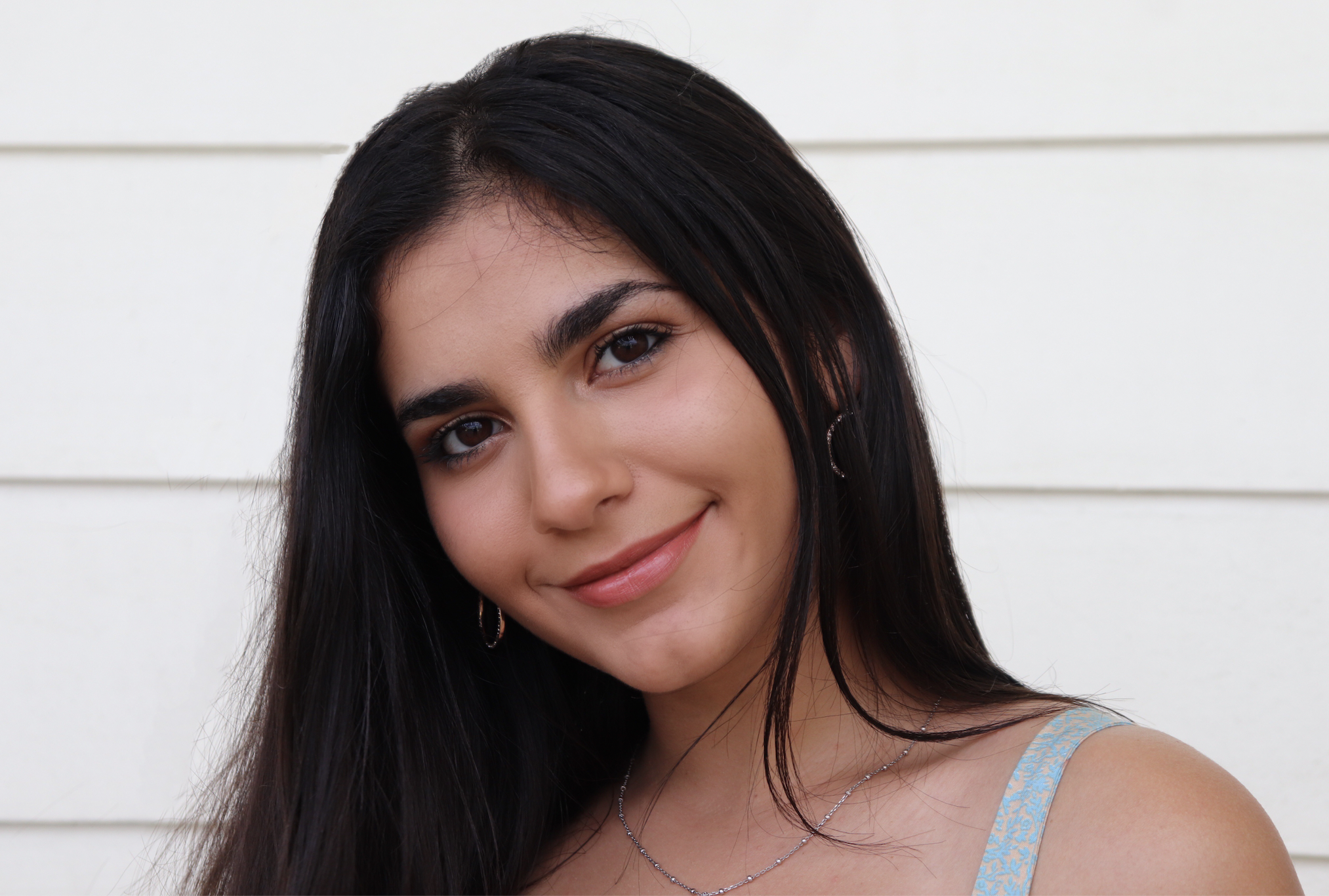
BIO
I'm a current freshman from San Juan, Puerto Rico, majoring in STEM Entrepreneurship with a minor in Computer Science at The Jim Moran College of Entrepreneurship. Through my studies, I plan on pursuing a career in the intersection of technology and business, such as Data Analytics, Data Mining, or E-commerce. Gaining admission to The Undergraduate Research Opportunity Program, I sought to expand my horizons in the STEM field of my academic journey. Considering my past experiences surviving detrimental category five hurricanes on an island, I felt particularly passionate about the entailments of the database title "Art as a Catalyst for Change: Sustainable Water Use During a Hurricane Research. Project." With the reevaluation of the initial objectives, the research team shifted to developing a prototype of "The Hurricane Go-Pack: An Initiative To Provide Natural Disaster Relief."
"The Hurricane Go-Pack: An Initiative To Provide Natural Disaster Relief."
Authors: Nadya Rexach-Rivera, Holly HanessianStudent Major: STEM Entrepreneurship
Mentor: Holly Hanessian
Mentor's Department: Department of Art Mentor's College: Florida State University College of Fine Arts Co-Presenters:
Abstract
As an initiative to provide comfort and assistance during a hurricane, Holly Hanessian, research project supervisor, created the first Hurricane Art Kit, consisting of a floatable container including a water filter, matches, candles, and a hand soother to alleviate stress. In partnership with Florida State University’s RIDER Center, the research team is simultaneously working on alleviating the devastating effects of weather-related disasters for at-risk communities due to global warming by promoting resiliency and water conservation. The next re-invention of the Hurricane Art Kit, The Hurricane Go-Pack, has the primary purpose of serving as an emergency disaster loaner kit in local libraries. The Go-Pack will be specifically used during the upcoming hurricane season after being distributed in its locations next June as a library loan object. The new prototype will include a waterproof backpack to store the items, a solar light, a multi-use tarp, water bottle, along with a standard-sized water bottle filter that filers up to 100,000 gallons of water, county-specific evacuation routes, among other items… This initiative will contain appropriate metrics to measure the effectiveness of the updated prototype in local libraries, used in assistance at a first responder location to provide conventional aid to at-risk communities.
Keywords: Hurricane, Disaster Relief, Sustainable, prototype
22nd annual Undergraduate Research Symposium
Ryan Merlin Poster Session 7: 3:30-4:15/Poster #41
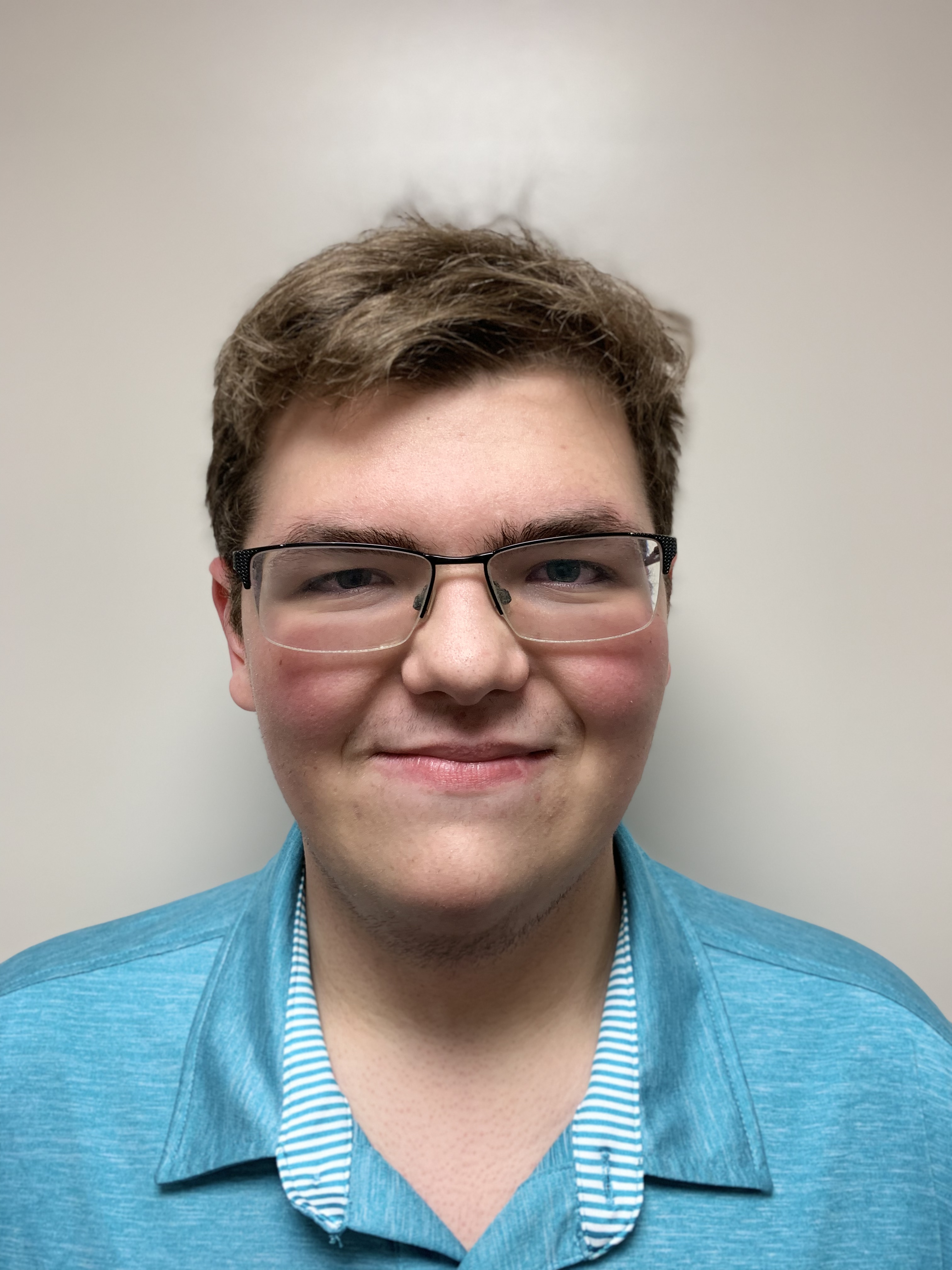
BIO
I'm a second-year student at FSU and I am originally from Des Plaines, Illinois, a suburb of Chicago. My current research interests are very broad and I am interested in studying areas across biology, chemistry, and medicine.
Determining the Structure of the N-Terminus of the Sulfite Reductase Flavoprotein
Authors: Ryan Merlin, M. Elizabeth StroupeStudent Major: Biology
Mentor: M. Elizabeth Stroupe
Mentor's Department: Biological Sciences Mentor's College: Arts and Sciences Co-Presenters:
Abstract
Sulfite Reductase (SiR) is a unique protein which is responsible for turning sulfur into biomass. SiR has two types of subunits: a flavoproteins (SiRFP) and a hemoprotein (SiRFP). The N-terminus of SiRFP allows the eight SiRFP subunits to combine and form an octamer. To better understand the structure of the SiRFP octamer and SiR in general, the N-terminus’s structure must first be determined. This is difficult because the whole octamer is a large protein complex. To simplify the process, we have fused just the N-terminus of SiRFP to a smaller protein called SUMO (NFPSh). To get the N-Terminus we must first grow a culture of cells which carry the gene that express NFPSh, lyse the cells, and send the protein through various columns to purify it. Once we have the protein, we use a robotic machine called the Gryphon to test our protein under many different chemical conditions to identify the conditions in which NFPSh is inclined to crystallize. From there, we can set up manual trays with similar conditions to attempt to get the protein to form large crystals. Once the protein has been successfully crystallized, a technique called X-ray crystallography will be used to get a diffraction pattern. We can use the diffraction pattern to find the electron density and determine the structure of the protein. Once the structure has been determined, it will give insight into how the N-terminus functions to octomerize SiRFP, which will help us better understand the structure and function of the molecule, SiR.
Keywords: Crystallization, Protein Structure, X-Ray Crystallography
22nd annual Undergraduate Research Symposium
Jack Folwell Poster Session 1: 9:00-9:45/Poster #58
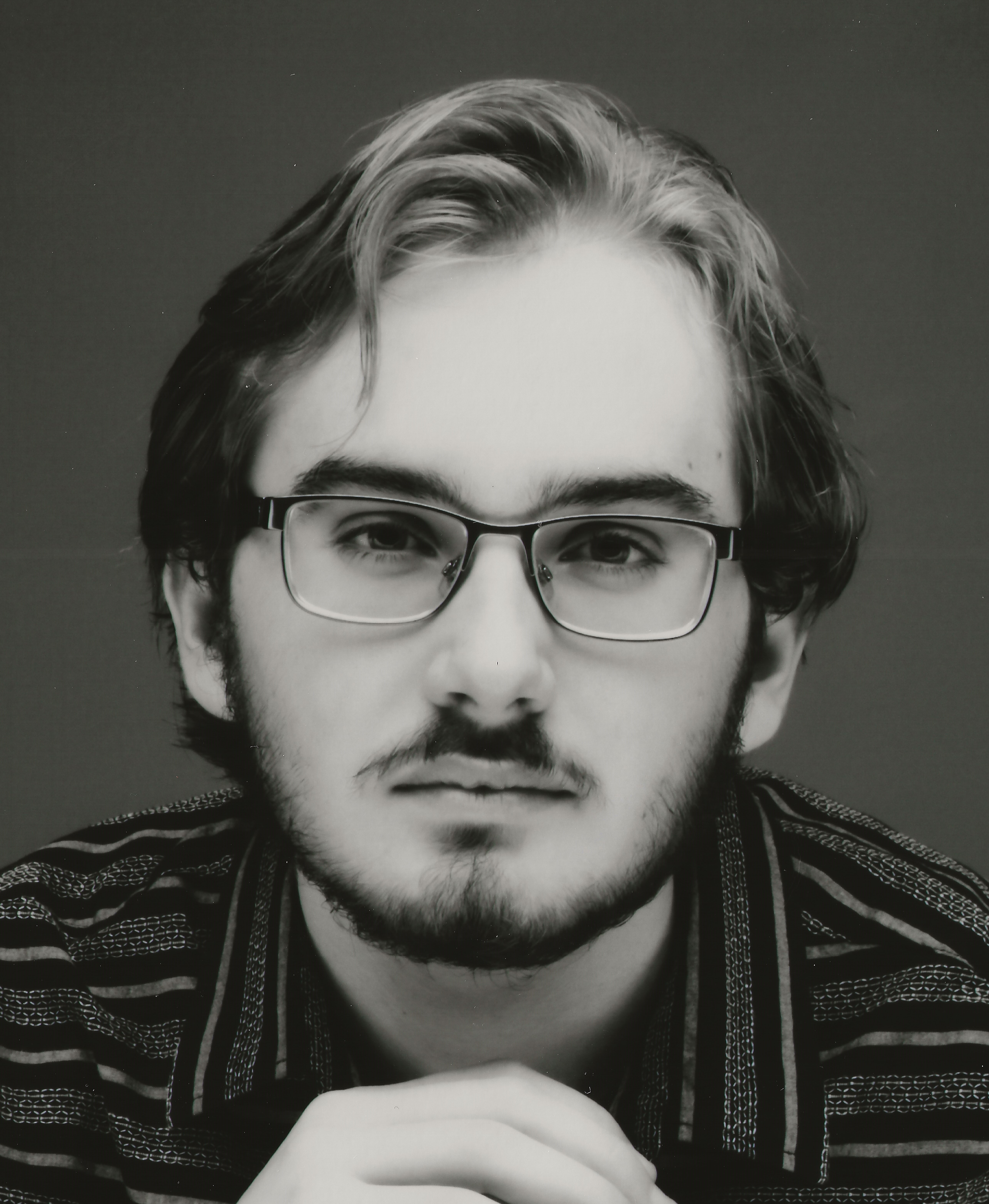
BIO
Jack Folwell is a first-year Presidential Scholar in the College of Arts and Sciences, seeking a BS in Physics. He also intends to obtain a double major in political science. He is involved in the Honors Student Association, TEDxFSU, Phi Eta Sigma, the Student Government Association, and the Society of Physics Students. He is hoping to work in government scientific advising in the future, and other research interests include how scientific information spreads and how we as a society can stop it.
Information Literacy Skills and Beliefs
Authors: Jack Folwell, Vanessa DennenStudent Major: Physics and Political Science
Mentor: Vanessa Dennen
Mentor's Department: Educational Psychology & Learning Systems Mentor's College: College of Education Co-Presenters:
Abstract
This project is primarily concerned with exploring how pre-existing beliefs, knowledge, and philosophies can influence how one receives and reacts to new information they read on the internet. One’s background shapes how they discern between falsified and legitimate information, as well as what they do with this information. This project is a systematic literature review of research on literacies related to online information searching and consumption. A search of academic databases yielded 497 articles across various academic terms, such as “information literacy”, “media literacy”, “internet literacy”, among others. Articles were screened for relevance and to ensure they represent empirical research. Relevant are being coded to identify trends across literacy frameworks. Through this systematic review, we can see similarities and gaps. The gaps will be used to identify opportunities for better articulating knowledge and skills related to networked knowledge access and use.
Keywords: Media Literacy, Internet, Literacy, Social Media
22nd annual Undergraduate Research Symposium
Ashleigh Witherington Poster Session 1: 9:00-9:45/Poster #1
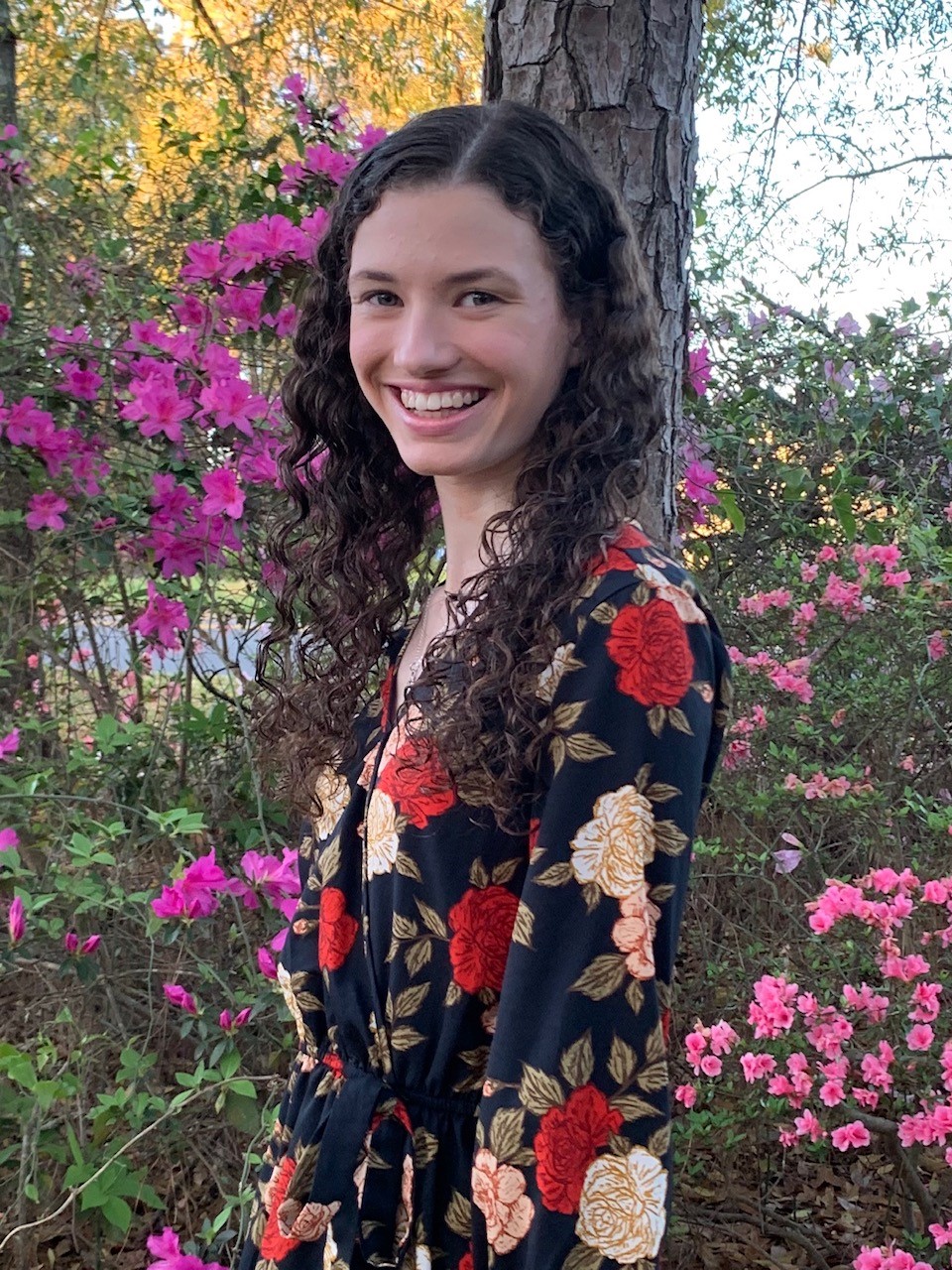
BIO
Ashleigh Witherington is a Junior honors student majoring in Latin and Greek and minoring in Religion. She is from Tallahassee, Florida. Ashleigh is grammateus (secretary) of FSU’s chapter of Eta Sigma Phi (Classics Honor Society). She is also a member of Phi Beta Kappa, Phi Eta Sigma, Phi Kappa Phi, and Golden Key International Honor Society. Her research interests include Latin textual criticism and paleography. She plans to continue her research on the Latin text of Josephus’ Jewish Antiquities and produce a critical edition of a larger section from Book 13.
A Critical Edition of the Latin Translation of Josephus’ Jewish Antiquities, Book 13.301-313
Authors: Ashleigh Witherington, David LevensonStudent Major: Classics: Latin and Greek
Mentor: David Levenson
Mentor's Department: Religion Mentor's College: Arts and Sciences Co-Presenters:
Abstract
My research focuses on producing the first critical edition for the Latin translation of Josephus’ Jewish Antiquities, Book 13. Josephus wrote the Antiquities in Greek at the end of the 1st century CE, and it remains the most important source for the history of the Jews from the end of the Biblical era to Josephus’ own time. The sixth-century Latin translation is significant because it is through this translation that Josephus’ account of Jewish history was known for centuries in Western Europe up to the publication of the first Greek printed edition in 1544. Unfortunately, there is currently no critical edition noting the textual differences among manuscripts of the Latin translation of Antiquities 6-20. Here I present my preliminary results based on the collation of thirty-four of the ninety-eight extant manuscripts for Antiquities 13.301-313. This passage details the accession of the Jewish king Aristobulus and the jealousy which led to the death of his brother. I also present discussions of (1) how manuscript groups can be identified based on the wide variety of textual differences among the manuscripts and (2) how the original text can be established based on these variants and groups.
Keywords: Textual Criticism, Josephus, Latin, Religion
22nd annual Undergraduate Research Symposium
Urvish Patel Poster Session 7: 3:30-4:15/Poster #45
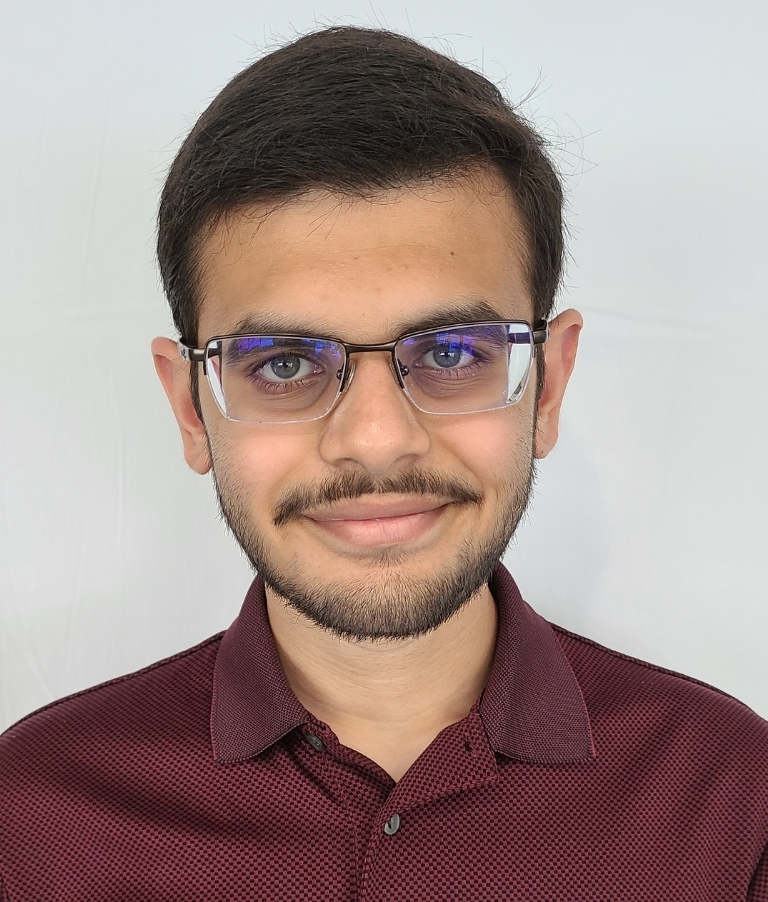
BIO
I am Urvish Patel. I am a sophomore here at FSU. My hometown is Perry, Florida and I am an alumni of Taylor County High School. My carrier goals are to study obtain a Bachelors in Biological Science and apply to medical school to become an infectious disease doctor. My current research goal is to classify my current phage named 8C. Through my research, I wish to get a better understanding of microbiology and learn more about microorganisms, so that I am better prepared for my future carrier position.
Sinorhizobium meliloti bacteriophage 8C is a Siphovirus closely related to phages of the human pathogen Pseudomonas aeruginosa
Authors: Urvish Patel, Dr. Kathryn M. JonesStudent Major: Biological Science
Mentor: Dr. Kathryn M. Jones
Mentor's Department: Department of Biological Science Mentor's College: College of Arts and Sciences Co-Presenters:
Abstract
Rhizobial bacteria are agriculturally important nitrogen-fixing endosymbionts of legume plants that provide ‘fixed’ nitrogen to the host. Rhizobia can exist in the free-living state in the soil or invade host plant roots to initiate the symbiosis. All bacteria, including the rhizobia, are preyed upon by viruses, known as bacteriophages. We are studying the role that bacteriophages play in attrition of the rhizobial populations in the soil and how this influences the success of the soil rhizobial population relative to the population that engages in the symbiosis with host plants. As part of this study, we are characterizing different groups of bacteriophages that infect the rhizobial species Sinorhizobium meliloti. Initial genome sequencing of one of these phages, 8C, suggested that it belongs to the family Siphoviridae. Siphoviruses are characterized by a long non-contractile tail. This morphology was validated for 8C by electron microscopy, which also shows a prolate (elongated) head. Surprisingly, 8C is very similar to phages that infect the human respiratory pathogen Pseudomonas aeruginosa. Further characterization of the structure of the capsid by electron microscopy has been limited by instability of the capsid during purification. It is uncertain what is causing this to occur, and we are currently determining conditions that improve capsid stability. Future goals to understand more about 8C are to determine the capsid structure using cryo-electron microscopy, characterize the proteome using mass spectrometry, and determine where each of the functional modules of the 8C genome lie on a phylogenetic tree.
Keywords: Phages, Rhizobial bacteria, Electron microscopy, Phylogenetic tree, Genomic
22nd annual Undergraduate Research Symposium
Alicia Wilson Poster Session 1: 9:00 - 9:45/Poster #22
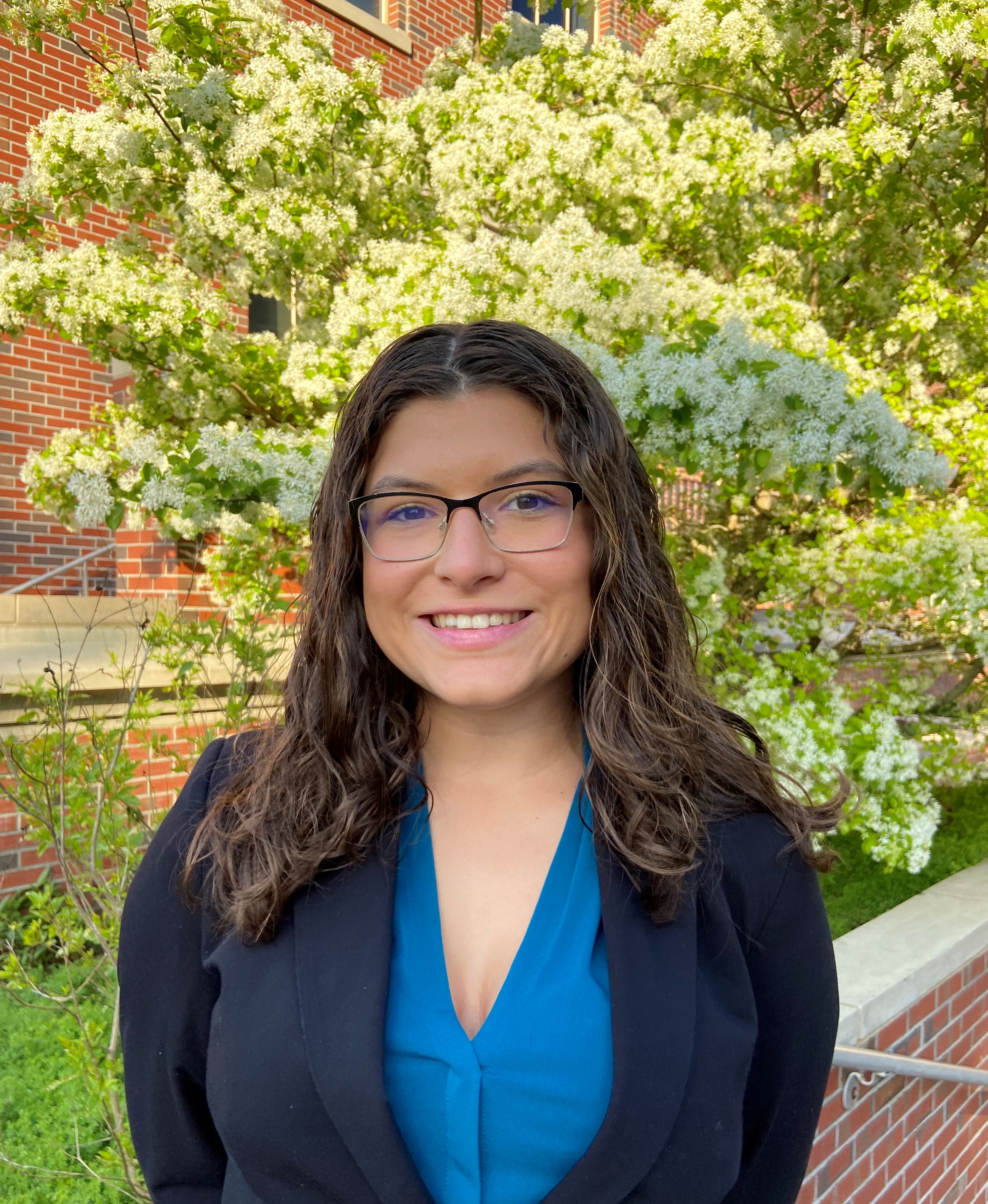
BIO
I am a Chemical Engineering student from Fort Lauderdale, Florida; interested in researching the fields of biodegradable polymers, ocean acidification, and clean energy. Researching stable isotopes in Southern Sting Rays allowed me to explore my passion for marine biology, as I find the intricacies of ecosystems fascinating. This project has allowed me to be involved in research relating to the marine environments I hope to preserve through my engineering endeavors.
A Comparison of Stable Isotope Dynamics in Black Sea Bass (Centropristis striata) and Southern Stingrays (Hypanus americanus)
Authors: Alicia Wilson, Ashley DawdyStudent Major: Chemical Engineering
Mentor: Ashley Dawdy
Mentor's Department: Biological Science Mentor's College: FSU College of Arts and Sciences Co-Presenters: Sadie Mack
Abstract
Stable-isotope analysis (SIA) measures the amount of non-radioactive isotopes which can be used in determining the flow of nutrients throughout food webs, and among the trophic levels. The goals of this experiment were to 1) identify the time taken for a change in trophic level to be reflected in the tissues of elasmobranchs using nitrogen- and carbon-based SIA and 2) compare isotopic signatures of teleosts and elasmobranchs feeding at the same trophic levels. The diet of Hypanus americanus (Southern stingray) and Centropristis striata (black sea bass) were controlled. They were fed a primary consumer diet (shrimp) for 11 weeks, then switched to a secondary consumer diet (squid) for 11 more weeks. Blood and muscle samples were taken weekly for the Southern stingrays and every 2-3 weeks for black sea bass. These samples were then prepped and sent for stable isotope analysis. It has been assumed that teleosts and elasmobranchs have the same isotopic signatures across trophic levels, however, due to their vastly different physiologies, we expect to see a different result. This will aid ecological studies, as researchers will be able to better interpret isotopic signatures of tissues by gaining knowledge regarding the time frame in which trophic shifts will be reflected.
Keywords: Marine Biology Isotopes

